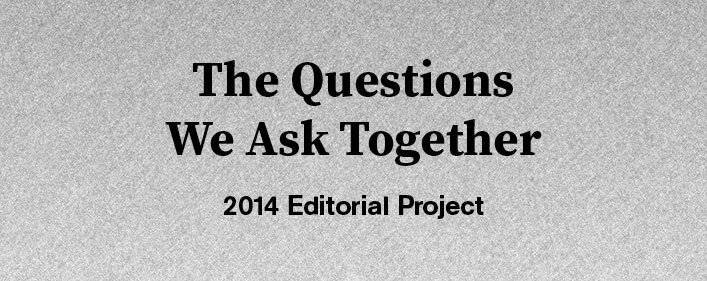As a social practice artist, does it matter if we are legitimized as “artists”?
Earlier this week I was having a conversation with Joseph Del Pesco and Mack McFarland about how Social Practice should potentially become its own discipline separate from Art. Joseph suggested that a divorce could be good for social practice––we would get to shape our own terms and stop trying to prove that we measure up to being good Art, or even Art at all.
I don’t think that having our work be recognized as Art is the central motivation of most people who make social practice projects. But the thing about the discipline of Art is that it has become a place where a person can use the tools of other disciplines without having to follow all their disciplinary rules. Other fields of knowledge can be very prescribed about what kinds of questions are worth asking, how they do that asking and who they do it for. Art has become the field where you can break all professional decorum, take into consideration ideas from across formal and informal fields of knowledge, and still have people around who will talk with you about it. A formal separation of Art and Social Practice would mean having more and more precisely segregated and professionalized categories of knowledge and I am hesitant to go there. I think we should protect our endangered transdisciplinary, de-professionalized, open-areas, even when they exist in the midst of an established discipline.
And the field of art still has so much to offer us. It has all the institutional mechanisms for generating the necessary discussion around this work––the schools, funders, museums, historians, critics, journals, etc. It is nice sometimes to imagine escaping the old institutionalized ways of doing things and starting all over free and fresh––but I don’t want to live and work in isolation from the history and presence of other people who are also trying to make sense of our shared cultural conditions. Art is a space for reflecting on the meaning of cultural activity, and it is a space that has resources and networks of interested, invested people. We could do what we do and not seek to be understood as artists, but the history of Art and its institutions provide us the places and the precedent for discussing the meaning of our actions. Even if we are moving in divergent directions from some of Art’s concerns I don’t think we gain much breaking off ties with the history of where we came from. Plus I think art would eat itself if it didn’t have social practice to gnaw on and try to spit out.
About the contributor: Ariana Jacob makes artwork that uses conversation as medium and as a subjective research method. Her work explores experiences of interdependence and disconnection, questions her own idealistic beliefs, and investigates how people make culture and culture makes people. She received her MFA in Art and Social Practice from Portland State University. Her work has been included in the NW Biennial at the Tacoma Art Museum, Disjecta’s Portland 2012 Biennial, The Open Engagement Conference and the Discourse and Discord Symposium at the Walker Art Center. publicwondering.wordpress.com
